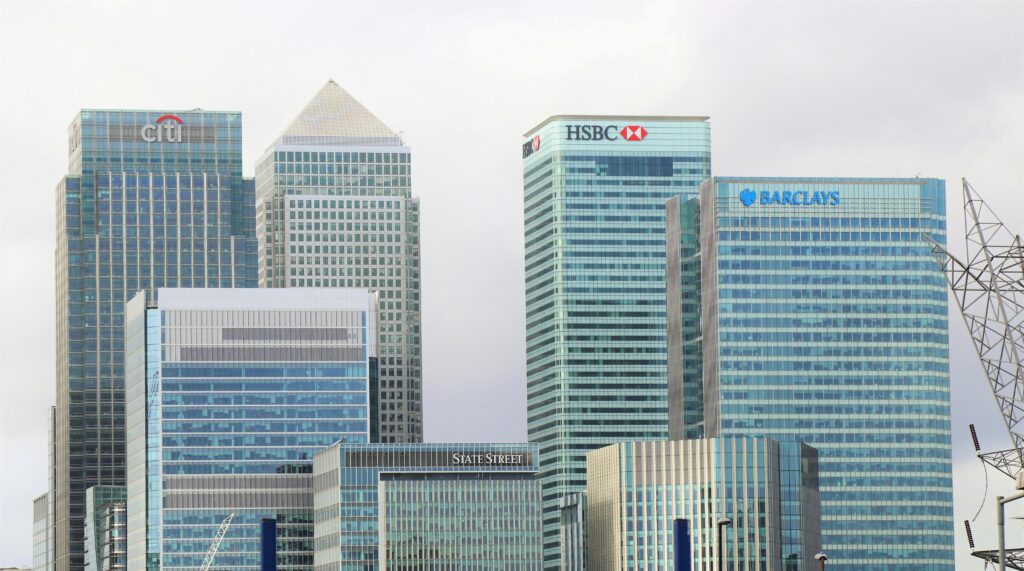
Barrie Clement
As high-street banks disappear from our high streets, banking
hubs are seen as the way forward, writes Barrie Clement.
This article was first published in The Pensioner magazine in December 2023
The figures are stark. More than 5,000 bank and building society branches have closed in the UK since January 2015, according to Which? And another 206 are due to close by the end of this year*.
That’s a massive problem for those who do not bank online and for those who prefer to use cash rather than a card. People who live in smaller towns and villages have been worst hit. When I was growing up about 60 or 70 years ago in Briton Ferry, a small town in south Wales, every major bank had a branch there. Now, there are none.
It is a familiar story throughout the UK, where there are a growing number of ‘banking deserts’. Since the mid-1990s, the number of building society branches has held steady, but bank branches have been in freefall. Between 2012 and 2022, the total number of bank and building society branches slumped by a whopping 40%.
Financial exclusion
Ipsos research for Age UK has found huge numbers of people are at risk of financial exclusion as a consequence. Nearly four in 10 older people with a bank account in Britain – some 4.09 million people – are not managing their money online.
The poll found a high level of support for in-person banking, with three-quarters of over-65s who had a bank account – 7.86 million people – regularly wanting to handle at least one banking task in person at a bank, building society or Post Office.
The research also discovered nearly a third of older people with a bank account – 3.25 million people – feel uncomfortable with online banking. Age UK’s You can’t bank on it anymore report reveals that research participants most likely to feel uncomfortable using online banking are those aged 85+, female, on a low income, or more disadvantaged than their counterparts. And those who were uncomfortable cited not wanting to be defrauded or scammed (31%), a lack of trust in online banking (28%) and poor IT skills (28%) as the main reasons.
Call for action
The charity has called for the protection of physical banking services for those who do not or cannot bank online, and for the accelerated roll-out of shared banking hubs in areas where bank branches are fast withering away.
Under pressure from a range of organisations concerned about access to banking facilities, banks are belatedly trying to set up such hubs. These premises – funded by the major banks through an organisation called Cash Access UK and operated by the Post Office – offer services in bank-forsaken areas for customers who prefer to deal with human beings rather than computers.
The advantage of the hubs is that customers of a wide range of banks can deposit and withdraw cash and perform other everyday banking tasks in one place. Those facilities are available on a daily basis, but face-to-face services from individual banks can be accessed on designated days, normally once a week, with a representative offering debt advice, help with fraud prevention and generally putting a human face on managing money. Many are being located in Post Offices, but other suitable buildings are being used, such as libraries.
Customers of nearly all UK banks – Barclays, Halifax, HSBC, Lloyds, NatWest and Santander – can already access basic banking services from any of the Post Office’s 11,500 branches, to deposit cash and cheques, withdraw cash and make enquiries about your balance. But for other services, banking hubs could be the answer.
Half the participants in the Age UK survey who had a main bank account – 5.14 million people – said they would be comfortable using a hub to manage their money. That’s a surprisingly high proportion, given that most of us are yet to experience the new service. The hubs are proving popular with the local communities in which they are based, but roll-out must speed up to avoid more communities becoming banking deserts.
Given the scale of the problem, the response from the banking industry has been unimpressive. While branch closures have been happening for at least a decade, as we went to press only eight banking hubs had so far opened. They are in Acton, Brixham, Buckingham, Cottingham and Rochford in England and Cambuslang, Carnoustie and Troon in Scotland. There are none so far in Wales or Northern Ireland (see panel).
To be fair to the banks, the number of people using cash has, until recently, plummeted. UK Finance says that in 2006, cash accounted for 62% of payments, but by 2031 this will be down to 6%. But as the banks themselves acknowledge, that’s still billions of payments, and the people who rely on cash tend to be older and some of the most vulnerable people.
Cash in decline
The Access to Cash Review, published in 2019, a study commissioned by the body that runs the UK’s cash machines (ATMs) on behalf of banks, warned that cash payments could be under threat if left to the mercy of market forces – potentially leaving millions of people struggling with their personal finances.
The review found further evidence that cash was in decline. It estimated it was used to make three in 10 transactions, down from six in 10 a decade ago, and it predicted this could fall to as low as one in 10 in the coming two decades. However it pointed out that around eight million adults wouldn’t cope in a cashless society.
It is generally acknowledged that the Covid pandemic accelerated the move away from notes and coins. Withdrawals from LINK’s ATM network are almost 40% lower than pre-pandemic levels. More recently, the cost-of-living crisis has generated a move back to cash on the basis that it helps people to budget – when the money in your pocket is exhausted you have to stop spending, but cards allow you to go into the red.
According to UK Finance, the number of payments made using cash increased by 7% in 2022, compared with 2021, to 6.4 billion payments – but this still only accounted for 14% of the overall total, having been dwarfed by card use. For those who rely on cash, the decline in the number of bank branches has been made worse by a substantial reduction in the number of cash machines.
LINK, which runs the ATM network, says the number of machines dropped from 70,588 in 2015 to 50,300 by December 2022. Not all of these ATMs are free to use of course. According to LINK, around 10,900 of the existing cash machines charge for the privilege of accessing your own money. The vast majority of both kinds of machines are part of the LINK system.
Meanwhile, with the encouragement of the Treasury, LINK is responsible for an initiative to make cash available in shops without the need to buy anything. Some 2,000 retailers were due to participate in the scheme, but it seems that only one in six of us know about the plan. And new research for Which? has found that shoppers are not using these schemes because they find them inconvenient and many believe they form a security risk.
From the initial reaction, banking hubs seem the way forward – for the medium term at least. Longer term, banks expect the trend away from cash to continue, as computer savvy millennials become pensioners – and the rest of us shuffle off to the great banking hall in the sky.
*all facts correct as of December 2023









